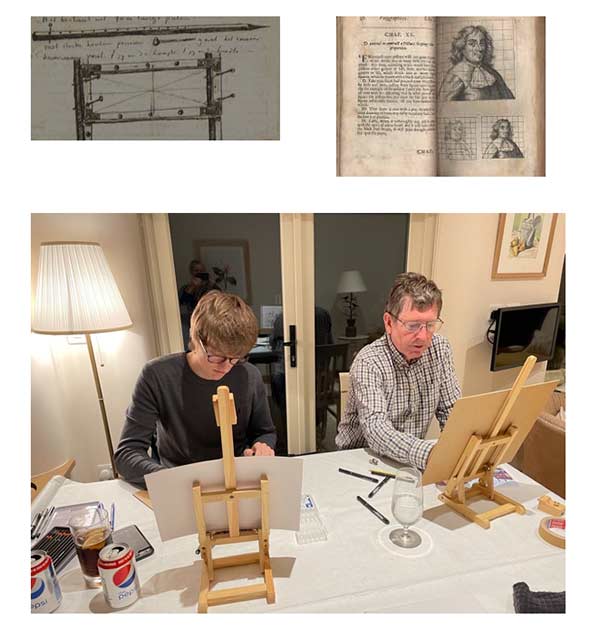Who cares how a drawing or painting is achieved – isn’t the only thing that matters the result?
“A picture is something which requires as much knavery, trickery and deceit as the perpetration of a crime.” EDGAR DEGAS
Is there any such thing as cheating at drawing?
Well, if so we better disregard the drawings and paintings of Leonardo, Vermeer and Canaletto for a start. They all used a ‘camera obscura’. Google it if you are interested.
Artists have been at it since the Renaissance.

Had they had iPhones and computers they would have used them. Michelangelo would have used a projector for the Sistine Chapel ceiling.
So I don’t feel guilty now in telling you that I sometimes trace directly from my computer screen.
Even Van Gogh used a frame with wires stretched across it.
And squaring up a drawing has been used for a long time.
Here’s me and Laurent drawing alongside each other. Laurent is studying architecture at Sheffield University and coming to me occasionally for drawing tuition. His ‘site’ for study is Kelham Island. Here are our drawings completed in 2 hours. We did however (after all I’ve said) start with a traced outline.

However you get your image onto paper, it really helps to be able to draw and understand what you are doing.
The trouble is (as with everything else) the more you know, the more you realise there’s even more that you don’t know.
Freehand drawings have character and soul like the artist who drew them.
Even starting with a traced outline, you still have to know what to draw and what to leave out.
Tracing isn’t cheating. But learn how to draw – don’t cheat yourself out of something wonderful.



